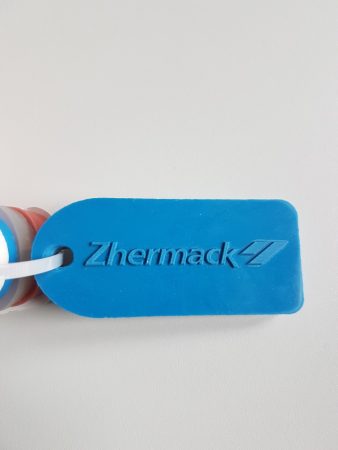- Additives
- Adhesives
- Chopped strand mats
- Core materials
- Epoxy resins
- Fabrics
- Fillers
- Gelcoats
- Grinding and polishing materials
- Jesmonite ® acrylic systems
- Kompozit gépek
- Pigments
- Polyester resins
- Polyurethane resins
- Release agents
- Safety equipments
- Silicones
- Tools and auxiliary
- Vacuum bagging materials
- Vinylester resins
ZA 50 LT in different packages
Bicomponent (base and catalyst) addition RTV silicon rubber that vulcanizes at room temperature. Hardness: 50 Shore A
Indicated for the duplication of models with small recesses.
Main Fields of Application:
Mould-making and model-making (for its remarkable reproduction accuracy, high dimensional stability and high
mechanical strength)
Silk-screen printing on ceramic (for its remarkable reproduction accuracy, high mechanical strength and the
excellent laser incision capability)
Artistic Ceramic
Jewellery field (duplication of the master mould in wax).
-
Chemical and Physical Properties
Mixing ratio
1 : 1
Viscosity of pre-catalyzation mixture
≈ 20000 cP
Total Working time at 23 °C (73 °F)
15’ – 20’
Setting time at 23 °C ST
180'
Shore A hardness after 24 hours
50 ± 3
Tensile strenght
4,0 N/mm2
Elongation at break
320 %
Tear strength DIE C
12 N/mm
Reproduction of details
2 micron
Dimensional variation after 24 hours -0.05 %
Instructions for use
Take the two bi-component products supplied by Zhermack (base and catalyst) and shake before use. Weigh an equal amount of catalyst and base (ex. 100 grams of catalyst and 100 grams of base; within a 5% error range the end result is not altered). Once the product is weighed and it is assured that the base and catalyst are equal, the two components are inserted in a recipient and mixed thoroughly. It is important to check while mixing that no residue remains on the base and sides of the recipient. Mix energetically until the colour of the product is homogeneous. Once the product is mixed it is poured, preferably 30cm above the recipient into the mould. The working time is approximately WT (see table below) from the beginning of the mixing at 23°C. It is advised to vacuum the mixture to prevent air pockets. If the quantity used is less than what is needed to complete the duplication, complete the hardening of the silicone and than proceed with the addition of the remaining silicone needed. The material attaches to the silicone without altering the final result.
The setting time (time the silicone needs to vulcanize) is about ST at 23°C (see table below). After the ST is complete, from the start of the mixing, we can separate the model from the mould. If necessary use compress air to facilitate this separation. It is important not to force this separation with sharp objects that can deform the final stamp. The silicon rubber is compatible with all gypsums, coatings, polyurethane resins and acrylic resinsNote: The working time and thus the setting time are reduced if the temperature exceeds 23°C (ex. If the temperature is 40°C, the working time is halved and the setting time is approximately halved). If the temperature is less than 23°C both the working time and setting time increase considerably. (ex. If the temperature is 4°C, the working time doubles and the Setting time increases three times the minutes indicated at 23°C ).
The silicone arrives till these temperatures: Minimum - 40 °C and Maximum +200°C.
-
Processing time 15-20Curing time (Hours) 1 óra






